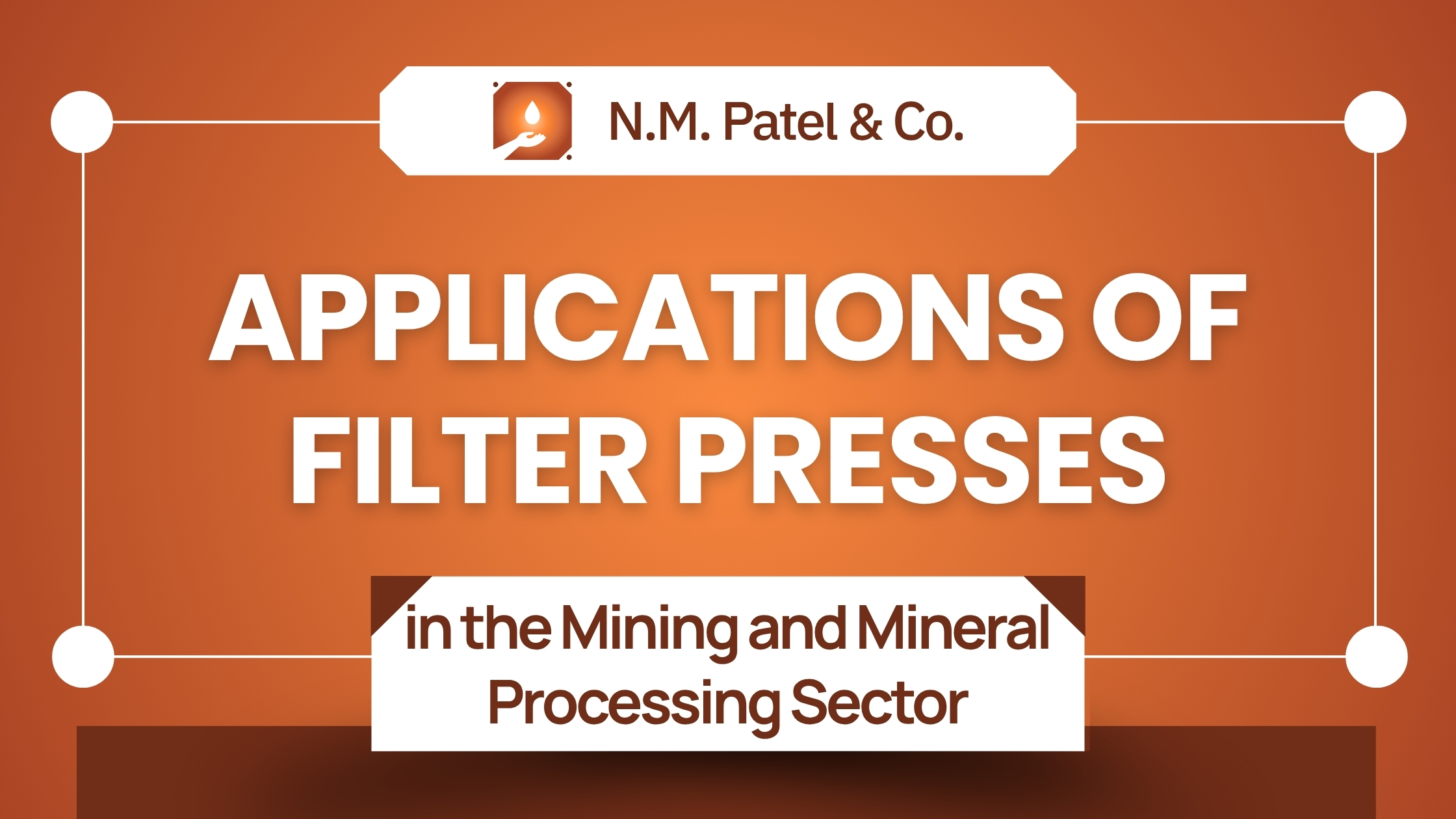In the mining and mineral processing sector, efficient separation of solids and liquids is critical. Slurries generated during ore extraction, beneficiation, and refining processes must be managed effectively to minimize waste, reduce water consumption, and maximize recoverable material. One of the most effective technologies for this purpose is the filter press in mining.
Filter presses are widely used to dewater slurries, producing dry filter cakes and reusable water. Their role has grown in importance as industries face stricter environmental regulations and rising demand for sustainable practices. In this guide, we’ll explore the key applications of filter presses in mining, the benefits they deliver, and best practices for successful implementation.
1. What Is a Filter Press in Mining?
A filter press is a solid-liquid separation machine that uses pressure filtration to dewater slurry. The slurry is pumped into chambers lined with filter cloths, where pressure forces liquid (filtrate) through the cloth, leaving behind a semi-dry cake of solids.
1.1 Key Components of a Filter Press
- Filter Plates: Create chambers to hold slurry.
- Filter Cloths: Allow liquid to pass while trapping solids.
- Hydraulic System: Applies pressure to compress plates.
- Filtrate Discharge System: Collects reusable water.
Modern designs, such as the recessed filter press, are widely used in mining due to their durability and efficiency.
2. Applications of Filter Presses in the Mining Industry
Filter presses have a wide range of uses across mining and mineral processing operations.
2.1 Dewatering Tailings
One of the most significant applications of a filter press in mining is tailings dewatering. After ore is processed, large volumes of slurry remain. A filter press reduces tailings into compact, stackable cakes that are easier to store and safer for the environment.
- Benefits:
- Reduces tailings pond reliance.
- Minimizes environmental risk of dam failures.
- Conserves water for reuse in processing.
- Reduces tailings pond reliance.
2.2 Concentrate Dewatering
During beneficiation, valuable mineral concentrates are separated from gangue. Filter presses help remove water from these concentrates, improving their handling and transportation efficiency.
- Example: Copper, zinc, and lead concentrates are commonly dewatered with filter presses.
2.3 Precious Metal Recovery
Gold, silver, and platinum mines often use filter presses to capture fine particles during refining. By dewatering residues and recycling water, filter presses improve overall recovery rates and reduce waste.
2.4 Acid Mine Drainage Treatment
Mining operations dealing with acid mine drainage (AMD) use filter presses to treat wastewater. They capture harmful solids, neutralize acidic content, and discharge safer water back into the environment.
2.5 Environmental Compliance
With stricter global regulations, mines must reduce their ecological footprint. Filter presses help meet compliance by reducing slurry volumes, minimizing pond usage, and supporting closed-loop water systems.
3. Benefits of Using Filter Presses in Mining
Implementing a filter press in mining offers multiple operational and environmental advantages:
- Water Recovery: Up to 95% of water can be recovered and reused.
- Lower Environmental Risk: Reduces reliance on tailings ponds and associated risks.
- Improved Material Handling: Produces drier cakes that are easier to transport and dispose of.
- Reduced Operating Costs: Less water usage and smaller tailings storage facilities lower costs.
- Scalability: Filter presses can be adapted to small or large-scale mining operations.
4. Challenges and Maintenance Considerations
Despite their effectiveness, filter presses require proper operation and maintenance. Common issues include:
- Cloth Clogging or Blinding: Reduces efficiency of filtration.
- Hydraulic Failures: Can halt operations if not maintained.
- Uneven Cake Formation: Impacts throughput and disposal.
Operators need to understand common filter press problems and how to fix them to maintain optimal performance in demanding mining environments.
5. Innovations in Mining Filter Press Technology
The role of filter presses in mining continues to expand as technology advances:
5.1 Automation and Smart Systems
Modern filter presses include automated plate shifters, cake discharge systems, and remote monitoring for better efficiency and safety.
5.2 Energy-Efficient Designs
New hydraulic systems and improved cycle designs lower energy consumption, reducing the carbon footprint of mining operations.
5.3 Large-Scale Applications
Mega filter presses are now designed to handle thousands of tons per day, suitable for large mining operations.
6. Future Outlook: Filter Presses in Sustainable Mining
As the mining sector evolves, filter presses will play a bigger role in sustainability initiatives.
- Closed-Loop Systems: Recycling water reduces dependence on local water sources.
- Dry Stack Tailings: Filter presses enable dry stacking, which is safer and more eco-friendly than traditional slurry ponds.
- Integration with Renewable Energy: Solar and wind power are increasingly being paired with filtration technologies for greener operations.
The future of mining will increasingly depend on efficient, environmentally responsible filtration systems.
Conclusion
The filter press in mining is a vital tool for improving efficiency, reducing waste, and meeting sustainability goals in mineral processing. Whether it’s dewatering tailings, enhancing concentrate handling, or treating wastewater, filter presses deliver both operational and environmental benefits.
By leveraging modern technologies like the recessed filter press and addressing common filter press problems, mining companies can ensure reliable and effective performance.
As global demand for minerals continues to rise, the future of mining will increasingly rely on sustainable practices—and filter presses will remain central to that transformation.
7. FAQs on Filter Press in Mining
Q1. What is a filter press in mining used for?
It is primarily used for dewatering slurry, reducing tailings, and recovering water for reuse in mineral processing.
Q2. Why are filter presses better than tailings ponds?
They produce dry cakes, minimize environmental risks, and allow water recycling, whereas ponds are costly and risky to maintain.
Q3. Which minerals benefit most from filter presses?
Copper, zinc, gold, silver, lead, and coal operations commonly use filter presses to dewater concentrates and residues.
Q4. What is the main advantage of a recessed filter press?
It provides durable, high-pressure filtration suitable for heavy-duty mining operations with high slurry volumes.
Q5. How can filter press problems be avoided?
Regular maintenance, monitoring, and using the correct filter cloths help avoid issues like clogging or uneven cake formation.


